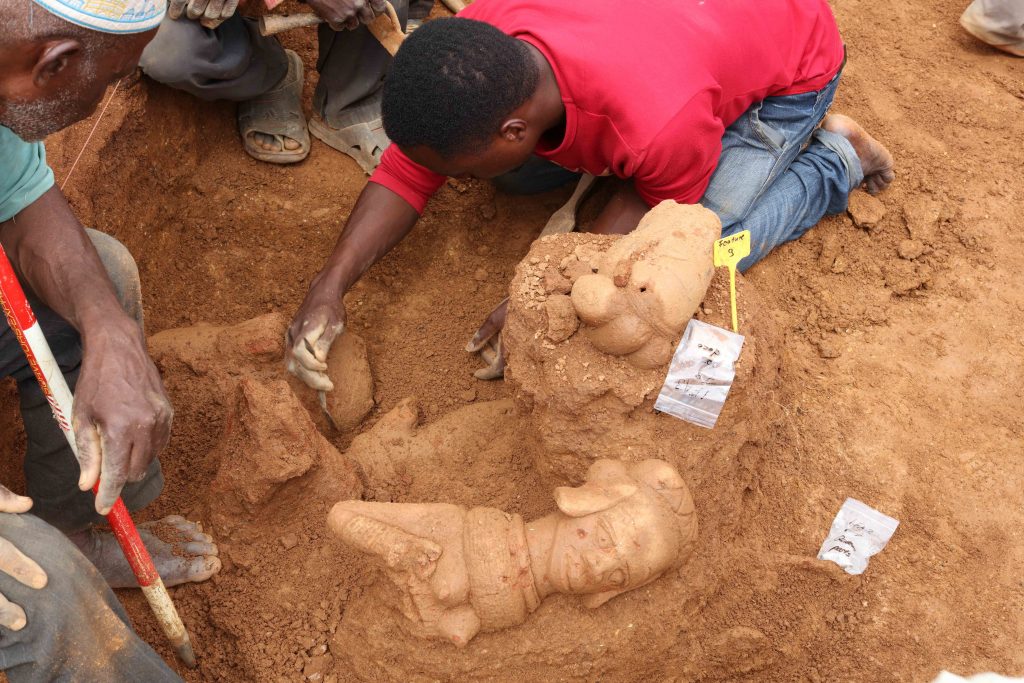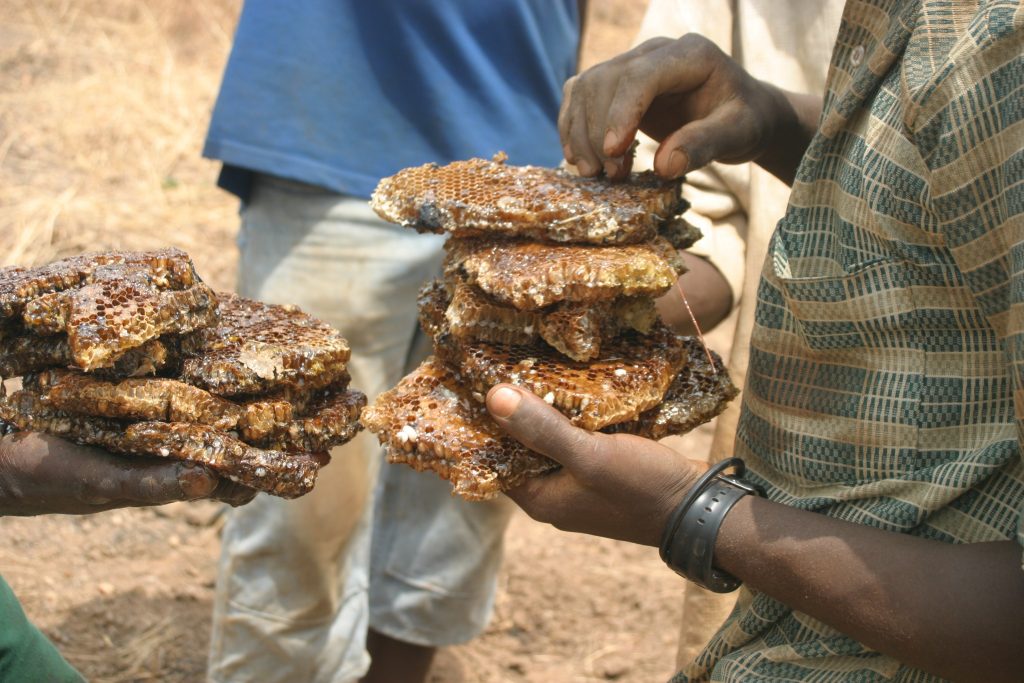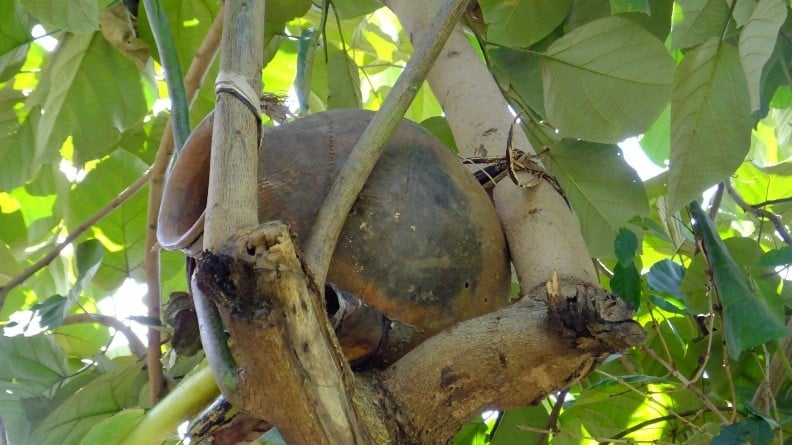Archaeology & History
Archaeologists Have Found Traces of Beeswax in Ancient African Pots, Suggesting It Was Used as a Sweetener 3,500 Years Ago
Honey was the first sweetener in human history.

Honey was the first sweetener in human history.

Sarah Cascone

Honey was the first sweetener used by humankind—and thanks to a new discovery, we now have proof that ancient people in sub-Saharan African were eating it as early as 3,500 years ago.
Archaeologists from Goethe University in Frankfurt and chemists from the University of Bristol in England have found traces of beeswax in pottery fragments from the Nok culture of central Nigeria that are now the earliest direct evidence of honey collecting on the continent. The findings were published in the journal Nature Communications.
Known for its elaborate terracotta sculptures, the Nok culture was active from roughly 1,500 B.C. to the beginning of the common era. Pottery is one of the best ways to learn about the Nok people and their diet, as the region’s soil is so acidic that bones and other organic remains typically aren’t preserved.
“This is a remarkable example of how biomolecular information extracted from prehistoric pottery, combined with ethnographic data, has provided the first insights into ancient honey hunting in West Africa 3,500 years ago,” the paper’s lead author, Julie Dunne, of the University of Bristol’s School of Chemistry, said in a statement.

Local forager bringing freshly collected honeybee comb to the archaeological dig at Ifana. Photo by Peter Breunig, courtesy of Goethe University, Frankfurt.
The study conducted a molecular analysis of food residue on the clay pots. “The technique involves grinding up small pieces of pottery excavated from archaeological sites and chemically extracting lipids, the fats, oils, and waxes of the natural world, providing a ‘biomolecular fingerprint’ of what foods were cooked in the pots,” Dunne wrote in Nature Ecology and Evolution.
Using gas chromatography, chemists were able to detect stable chemical compounds such as fatty acids that were released by food and animal products and had been preserved in the pores of vessel walls over the millennia.
And while no one expected to find beeswax, there it was, on one third of the pottery tested.

Nok terracotta figurines. Photo courtesy of Goethe University.
Previously, evidence of prehistoric honey use was limited to petroglyphs on several continents that include images of bees and bee products dating from 8,000 to 40,000 years ago. Egyptian reliefs, in particular, suggest the practice of beekeeping as early as 2,600 BC.
“We assume that the use of honey in Africa has a very long tradition,” Katharina Neumann, an archaeobotanist on the project from Goethe University, said in a statement.
“The oldest pottery on the continent is about 11,000 years old. Does it perhaps also contain beeswax residues? Archives around the world store thousands of ceramic shards from archaeological excavations that are just waiting to reveal their secrets through gas chromatography and paint a picture of the daily life and diet of prehistoric people.”

Modern-day ceramic beehive from Uganda, set in a tree. Photo courtesy of Bees for Development.
The Nok people may have used the vessels to heat beeswax to separate it from honey. Alternately, the pots themselves may have been used as beehives—a practice in use in Africa to this day. Or they may have been used to make honey-based drinks such as beer or wine, or to preserve meat products.
“We began this study… because we wanted to know if the Nok people had domesticated animals,” Peter Breunig from Goethe University, director of the Nok project, said. “That honey was part of their daily menu was completely unexpected, and unique in the early history of Africa until now.”